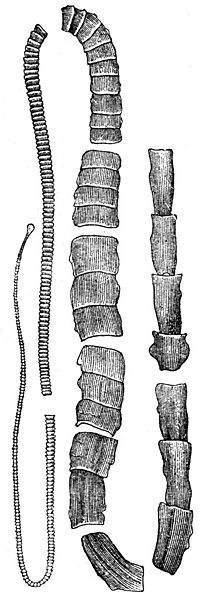Difference between revisions of "Category:Cestodes"
Jump to navigation
Jump to search
| Line 14: | Line 14: | ||
[[Image:Cestoda.jpg|thumb|right|150px|Cestoda Groups - Courtesy of C. Hermosilla, Royal Veterinary College]] | [[Image:Cestoda.jpg|thumb|right|150px|Cestoda Groups - Courtesy of C. Hermosilla, Royal Veterinary College]] | ||
| − | *Occlusion of pancreatic ducts sometimes happens [[Pancreas Parasitic | + | *Occlusion of pancreatic ducts sometimes happens [[Pancreas - Parasitic Pathology|Pancreas - parasitic]] |
*''Mesocestoides'' in carnivores causing [[Peritoneal Cavity Parasitic - Pathology|pyogranulomatous peritonitis]] | *''Mesocestoides'' in carnivores causing [[Peritoneal Cavity Parasitic - Pathology|pyogranulomatous peritonitis]] | ||
Revision as of 13:27, 9 June 2010
Cestodes
This class differs from the Trematodes in that they have a tape-like body, with no alimentary canal. A cestode (tapeworm) is a chain (strobila) of progressively maturing, independent reproductive units (segments or proglottids) anchored at one end to the intestinal wall by a hold-fast organ (scolex). Each segment contains one set, or sometimes two sets, of male and female reproductive organs.
- Occlusion of pancreatic ducts sometimes happens Pancreas - parasitic
- Mesocestoides in carnivores causing pyogranulomatous peritonitis
Subcategories
This category has the following 2 subcategories, out of 2 total.

